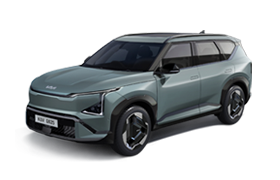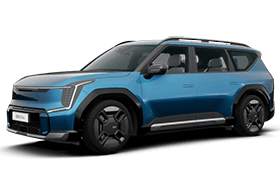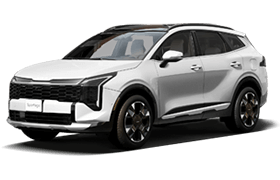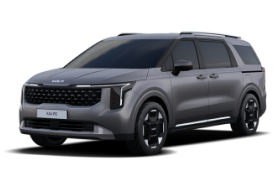Kia presents 2030 roadmap to become global sustainable mobility leader
By Kia Worldwide Mar 4th 2022
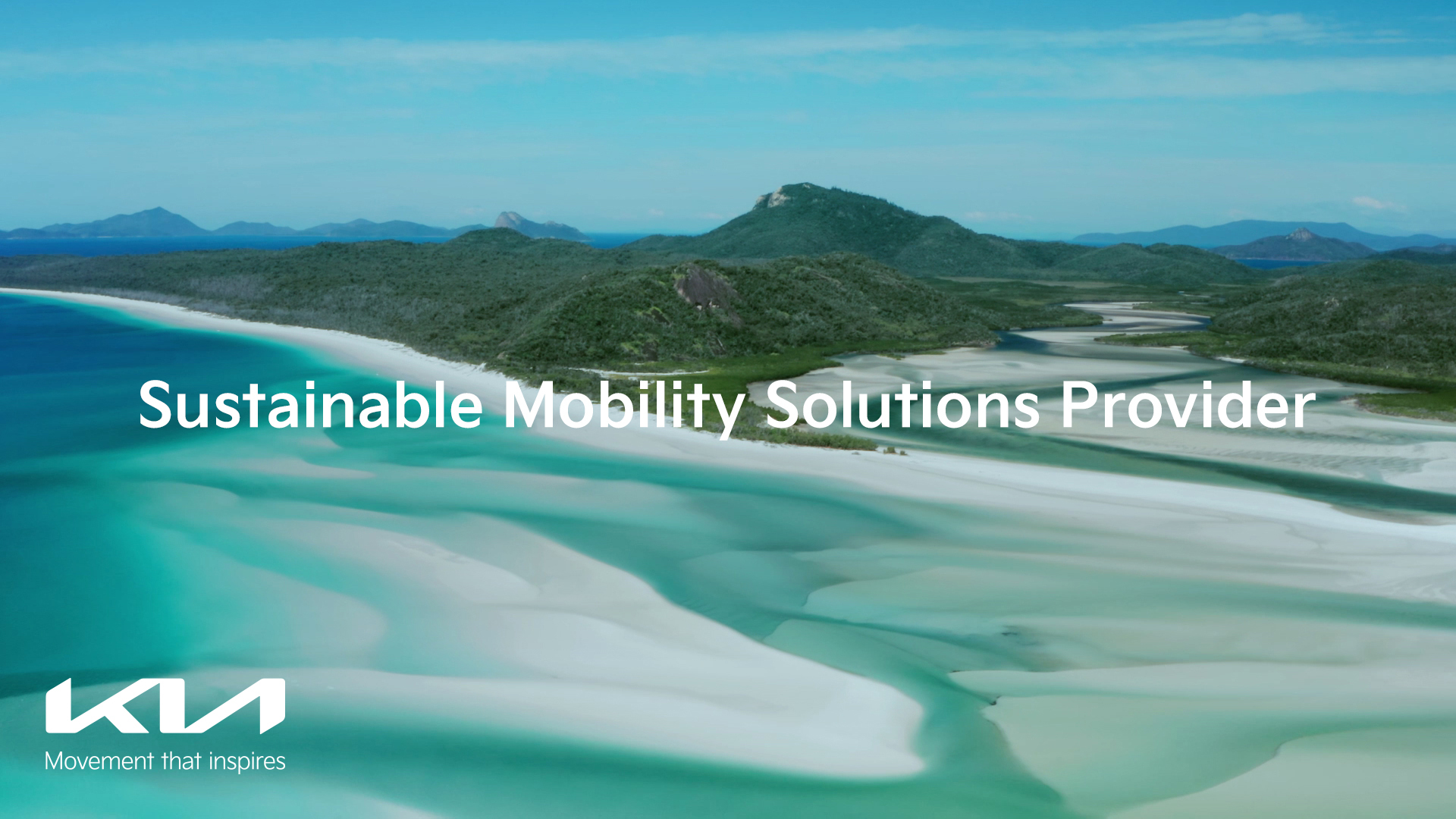
Kia Corporation has today built on its strategic commitment to become a leader in sustainable mobility with the roadmap to 2030 at the company’s 2022 CEO Investor Day virtual event.
- Kia announces key targets to transform into Sustainable Mobility Solutions Provider
- Company targeting 4 million annual vehicle sales globally in 2030
- Kia accelerating EV transition to sell 1.2 million BEVs in 2030
- Kia to establish a line-up of 14 BEV models by 2027
- Sales of Kia’s eco-friendly models to surpass two million in 2030; these models to represent more than 3 quarter of sales in major markets
- ‘AutoMode’, Kia’s new autonomous driving technology, to be launched in 2023 with first application in EV9
- Kia aims to expand connected car features to all vehicle lineup by 2025
- Aims to become No.1 global PBV brand by 2030
- First dedicated PBV model in 2025
- Company announces financial targets for 2026
- Gross revenue of KRW 120 trillion; operating profit margin of 8.3%
Kia Corporation has today built on its strategic commitment to become a leader in sustainable mobility with the roadmap to 2030 at the company’s 2022 CEO Investor Day virtual event.
The roadmap builds on Kia’s successful 'Plan S' strategy first announced in 2020 and reveals further details on how the company will achieve its vision to become a Sustainable Mobility Solutions Provider.
This corporate vision is supported by three key pillars – ‘people’, ‘planet’ and ‘profit’. Under these pillars, Kia will strive to enhance customer value and nurture talents, reduce carbon emissions in consideration for the environment, and generate profits while working as a responsible corporate citizen.
Kia also announced its four key business targets for 2030. These core business aims include: accelerating electrification and achieving annual sales of 1.2 million battery electric vehicle (BEV) units by 2030; reaching 4 million annual vehicle sales by 2030, including over 2 million eco-friendly models; expanding the application of connected car feature and autonomous driving technologies to all new vehicles; and become the number one brand in the global purpose-built vehicle (PBV) market by 2030.
During the CEO Investor Day event, Ho Sung Song, President and CEO of Kia Corporation, said: "Kia has been undergoing a full-scale transformation which has included changes in corporate vision, logo, product and design, and strategy. To achieve the company's vision of becoming a Sustainable Mobility Solutions Provider, we will focus on accelerating the transition to future business models. We will become even more customer-centric in our approach and pursue a dynamic transformation while maintaining sound business operations."
During the two years since first revealing its Plan S strategy, Kia has developed into a leading global electric vehicle (EV) brand while recording its highest ever gross revenue and operating profit in 2021. Kia aims to continue this positive momentum to create further value in both qualitative and quantitative aspects from 2022 onwards.
Achieving annual sales of 4 million units through popularising eco-friendly vehicles
Starting with an annual global sales goal of 3.15 million units in 2022, Kia aims to continue its quantitative growth by building on the company’s world-leading product quality. The aim is to achieve 4 million units in 2030, a 27 percent increase from Kia’s target for 2022.
As part of this quantitative growth, the company will also expand sales of eco-friendly vehicles (including BEVs, plug-in hybrid electric vehicles (PHEVs) and hybrid electric vehicles (HEVs)) through enabling and accelerating its electrification efforts.
The company will make the sales of these vehicles the focus of future business growth. Kia will expand the proportion of eco-friendly cars from 17 percent of global sales in 2022 to 52 percent in 2030.
In major markets with strong environmental regulations and a growing demand for EVs, such as Korea, North America, Europe and China, Kia plans to increase its proportion of eco-friendly car sales by up to 78 percent by 2030.
BEV line-up expanding to 14 BEV models in 2027
Kia is accelerating its transition to EVs to solidify its position as the world's leading EV maker. First, the company plans to expand its BEV product line-up.
Starting in 2023, Kia plans to launch at least two BEVs per year and build a full line-up of 14 BEVs by 2027. Compared to its previous plan to release 11 models by 2026, Kia will add two electric pickup trucks – a dedicated electric pickup truck and a strategic model for emerging markets – and an entry-level BEV model.
Kia plans to reaffirm its leadership in the EV market through its flagship electric vehicle the EV9, set for launch in 2023. Although the EV9 is a large SUV with a total length of around 5 metres, it boasts excellent acceleration of 0-100km/h in five seconds, and range of approximately 540km on a full charge. It can also provide a 100km driving range on just a six-minute charge.
A first for Kia, the EV9 will also feature OTA (Over the Air) and FoD (Feature on Demand) services that will allow customers to selectively purchase software functions. In addition, it will be the first model to be equipped with Kia’s advanced AutoMode autonomous driving technology.
Kia to achieve 1.2 million BEV sales in 2030
Thanks to new models like the EV9, Kia aims to increase sales of its BEVs. Starting with 160,000 BEV sales this year, Kia aims to sell 807,000 units in 2026 and 1.2 million in 2030 – a 36 percent increase from the 2030 EV target announced during last year's CEO Investor Day.
Kia projects that over 80 percent of its BEV sales in 2030 will come from Korea, North America, Europe and China, with BEVs taking a 45 percent share of total Kia sales in these major markets.
To accommodate this expanding volume of EVs, the roles of individual production sites will evolve. Korea will serve as a global hub for research, development, production and supply of EVs, while other global production sites will produce strategic EVs for each market.
In Europe, for example, small and medium-sized EVs will be produced starting from 2025. In the United States, where mid-sized SUVs and pickups are popular, electric versions of these models will be produced locally from 2024. In China, Kia plans to introduce mid-size electric vehicle models from next year, and India plans to produce entry and mid-size EV models from 2025.
Kia is planning to establish a battery supply and demand strategy and upgrade battery technology as demand is expected to increase significantly from 13GWh to 119GWh in 2030 due to increased EV sales.
Kia plans to supply batteries from the Indonesian battery cell joint venture and will simultaneously establish a stable battery supply and demand system by outsourcing to global battery companies.
In addition, the company plans to increase battery energy density by 50 percent by 2030 and reduce system costs by 40 percent, thereby enhancing both performance and price competitiveness.
Product strategy focused on connected car and autonomous driving technology
Kia has highlighted four key product areas in which the company can mobilise its capabilities to the fullest to lead the future mobility industry: connected car services, autonomous driving technology, performance and design.
From 2025, all new Kia vehicles will be equipped with class-leading connected car features. With the availability of OTA software update (Over-the-Air) and FoD (Feature-on-Demand) services across the Kia line-up, customers will be able to keep their vehicles up-to-date with various features and technologies.
This is part of Kia’s efforts to find new business opportunities based on software and connected car services. Kia expects connectivity services to play an important role across various mobility areas such as car-sharing, car-hailing, and delivery services.
Kia's range of autonomous driving technologies, branded ‘AutoMode’, will be rapidly expanded throughout the line-up starting with the EV9 in 2023.
Kia AutoMode supports performance optimization through wireless updates and will be improved as the technology develops. It will also include Highway Driving Pilot feature which would enable driving without driver intervention on highway sections.
By 2026, all new models launched in major markets will be available with AutoMode autonomous driving technology, with an adoption rate expected to surpass 80 percent. Long term, the company plans to further upgrade AutoMode technology and implement fully autonomous driving technology.
Kia will also focus on providing differentiated design for its products and expanding high performance model offerings. Beginning with the launch of the EV6 GT high performance model, Kia plans to expand the GT line-up to all BEV models.
Securing leadership in the global PBV market
As a customer-centred company, Kia will provide flexible mobility services that reflect the diverse needs of people and businesses. A core part of Kia’s work in this area will focus on PBV.
Kia is the one of the first movers in the global PBV market and plans to become a market leader. The demand for delivery and logistics services has increased significantly following the acceleration in e-commerce during the Covid-19 pandemic.
The ultimate purpose of a PBV is to provide specialised vehicles to customers based on their specific needs. To this end, Kia plans to establish a dedicated PBV communication channel that can quickly and accurately respond to customer requirements.
Kia also aims to establish an integrated data platform to provide customised services and solutions according to the diverse business models of its PBV customers, across areas such as vehicle charging, maintenance and management.
In the near term, Kia plans to develop PBV models derived from current models such as Niro Plus due to be introduced later this year. Niro Plus will be based on the company’s popular eco-friendly Niro SUV and is expected to be deployed for taxi service as well as car-hailing services.
In the mid-to long term, Kia will develop dedicated PBVs. The dedicated PBV will be developed as a flexible structure that sits on a flat, skateboard EV platform, so that the size and shape can be adjusted according to the purpose and customer needs.
Kia will launch its first dedicated model in 2025 when the PBV market is expected to mature. The first dedicated PBV will be similar in size to a medium-sized vehicle, with inherent scalability.
With the model, Kia is aiming to provide the ultimate convenience and offer 600,000 kilometres of durability through the application of OTA functions and autonomous driving technology to reduce operating costs of business owners.
As the PBV market grows, Kia plans to gradually expand its range from micro to large PBVs that can potentially offer an alternative to public transportation or even be used as mobile offices.
Financial targets for 2026 based on growth in EV profitability and new business areas
Kia also announced its mid- to long-term financial goals during the CEO Investor Day. By 2026, the company aims to reach a total of KRW 120 trillion in gross revenue, with 10 trillion won in operating profit and an operating profit margin of 8.3 percent. Kia aims to increase its market capitalization to KRW 100 trillion by 2026 – a threefold increase compared to KRW 33 trillion at the end of 2021.
The company plans to garner 39 percent of operating profit from BEVs in 2026 with the reduction of fixed costs through volume expansion and cost reduction from technology development.
Furthermore, Kia expects that by 2026, the contribution to operating profit from all eco-friendly models will reach 52 percent, exceeding that of internal combustion engine models.
To achieve these goals, Kia will not only expand sales of its eco-friendly models but also greatly improve profitability, securing additional sales and profit structures due to the commercialization of new businesses and technologies.
Kia will invest a total of 28 trillion won in its business operations over the next five years, up five trillion won from the previous plan, of which 46 percent will be invested in future projects, more than doubling the 2021 figure of 19 percent.
Going forward, Kia will continue its commitment for Environment Social Governance (ESG) management. Kia established a mid- to long-term roadmap for ESG management in 2020 and announced its goal to be carbon neutral by 2045.
Kia will also actively participate in Hyundai Motor Group's next-generation projects, such as Advanced Aviation Mobility (AAM), robotics. Specifically, Kia plans to focus on creating synergy between the Group’s AAM efforts and its own PBV business.



